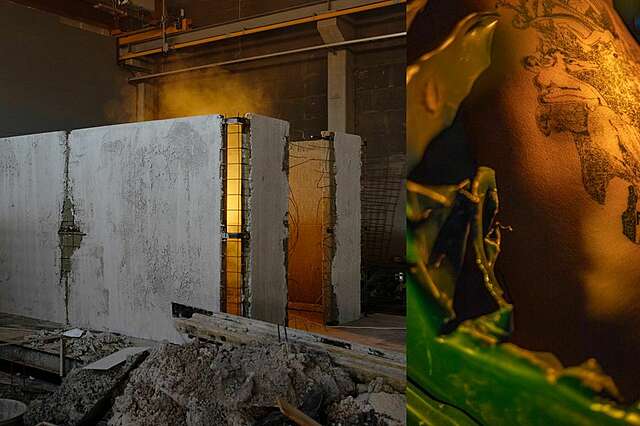New Standards website offers a sneak-peek to Finland’s upcoming exhibition at the Biennale Architettura 2021
In the era of post-war reconstruction, the Puutalo corporation became the largest export organisation for prefabricated wooden houses in the world. Next spring, an exhibition at the Pavilion of Finland will present the multifaceted story of the enterprise. Today, a website and interactive map reveal new research on the company and its international reach.
Launched today, the New Standards website is a preview of the forthcoming exhibition of the Pavilion of Finland at the 17th International Architecture Exhibition. With the opening in Venice postponed to 2021 and the global situation posing challenges on travelling, the commissioner, Archinfo Finland, will present the exhibition online as well. A sneak-peek is available on the site newstandards.info (link) with additional material to be published simultaneously with the Biennale opening in May 2021.
The New Standards project presents pioneering research on Puutalo Oy (Timber House Ltd), a Finnish industrial enterprise established in 1940 by 21 timber manufacturers to help resettle Finnish war refugees. The homes made by the company used prefabricated wooden elements, making them quick to build and cost-effective. The same systems were useful in other building types as well, from schools and hospitals to barracks and stores. Thousands of these buildings still exist, and the organisers have taken advantage of the Biennale postponement to launch a crowd-sourcing campaign to help document existing Puutalo structures around the world.
In the post-war reconstruction era, a pressing demand for effective building solutions spread across Europe, opening a possibility for the company to expand its domestic production into a large-scale global export venture. By the end of the 1940s, Puutalo had become the largest planning and selling organisation for prefabricated wooden houses in the world, delivering almost nine million square meters of buildings to every inhabited continent. In return for houses, Finland received desperately needed commodities such as oil, steel, coal, butter, coffee and oranges.
Read an article about the Puutalo export on the New Standards website through this link.
In Finland, almost everyone has seen a Puutalo house at some point, but the origin of these modest buildings has remained unfamiliar. The curators of the exhibition, Laura Berger, Philip Tidwell and Kristo Vesikansa, have spent over a year sifting through the company’s archives and documenting existing buildings around the world. Their research and the exhibition aim to shed light on the previously untold story of an enterprise that arose from the devastation of war to become an international success story.
The curators describe their research work by saying: “The buildings manufactured by the Puutalo corporation stand as evidence that standardisation and prefabrication do not inevitably lead to monotony or ‘inhuman’ architecture. In only 15 years, the in-house architects and engineers of the company created some two thousand building types to accommodate a wide variety of climates and lifestyles. To uncover these designs, we have dug deep into the Central Archives for Finnish Business Records, sifting through tens of thousands of drawings, photographs and other documents that have remained in storage for decades. Together, the documents selected for the exhibition illustrate the many ways in which architecture, culture and global trade became intertwined in the post-war era.”
“The materials reveal – often in amusing ways – how Finnish architects imagined life around the world from their desks in Helsinki. Detailed drawings of homes and inhabitants show charming depictions of daily life, from an Argentinian antelope hunter to a French girl feeding sheep.”
Thousands of Puutalo houses can still be found around the world. In addition to the archival material, the project documents how these houses have adapted to the needs of new generations of users over almost eight decades and how they are lived in today. Specially commissioned photographs by acclaimed photographer Juuso Westerlund bring out the personal and humane dimensions of the story, depicting inhabitants from different corners of the world who have opened their homes and lives to be seen.
The newly launched website includes an interactive world map which gives detailed information about Puutalo’s exports to different countries. Over the course of the project, the map will be updated with additional information drawn from user submissions and images – people from all over the world are invited to contribute to Finland’s exhibition project.
The website was created by Ville Niemi / Viiksimaisteri and designed by Päivi Häikiö, who is also in charge of the graphic identity of the exhibition and the accompanying publication. The technical solution for the World of Puutalo map is provided by Mapita Ltd.
Appointed by Finland’s Ministry of Education and Culture, Archinfo Finland is in charge of the Pavilion of Finland’s exhibition now for the second time.
Organised since 1980, the International Architecture Exhibition of La Biennale di Venezia alternates with the International Art Exhibition. It has become the most important international platform for showcasing architecture, with 275,000 visitors in the last edition in 2018. Due to the covid-19 pandemic, the 17th International Architecture Exhibition was postponed from 2020 and will be open to the public from 22nd May to 21st November 2021.
#newstandards


